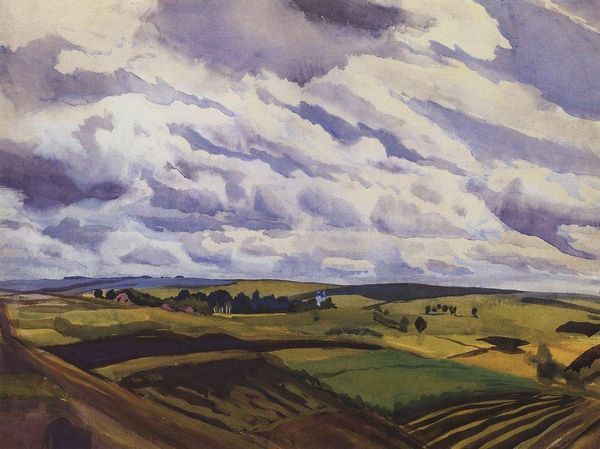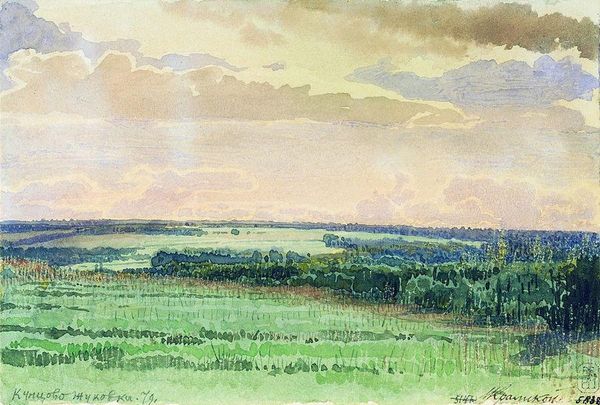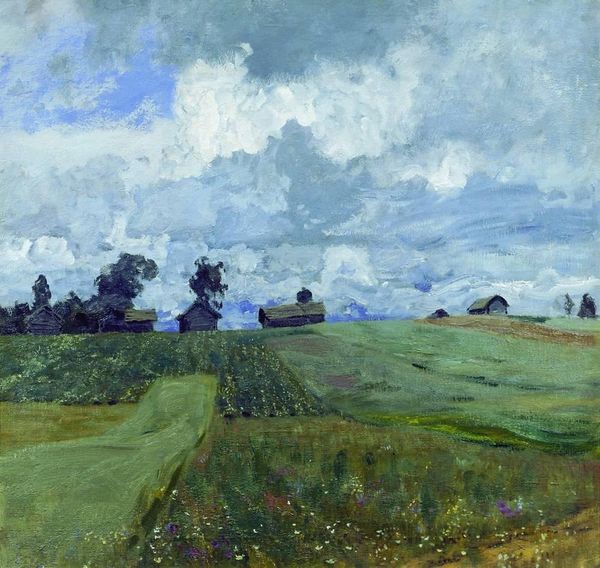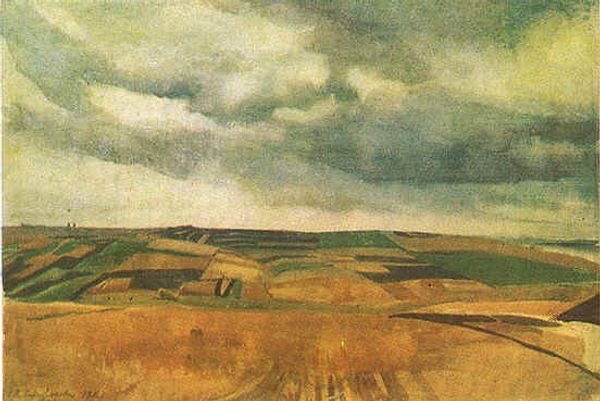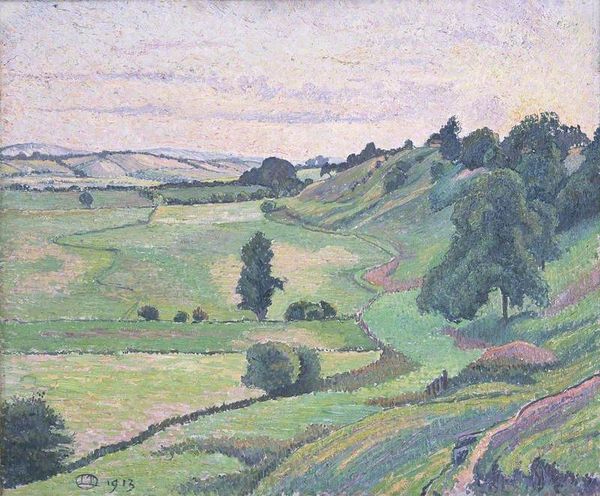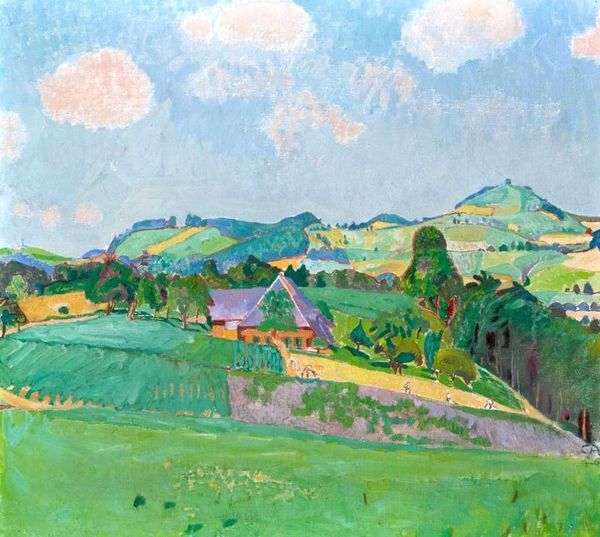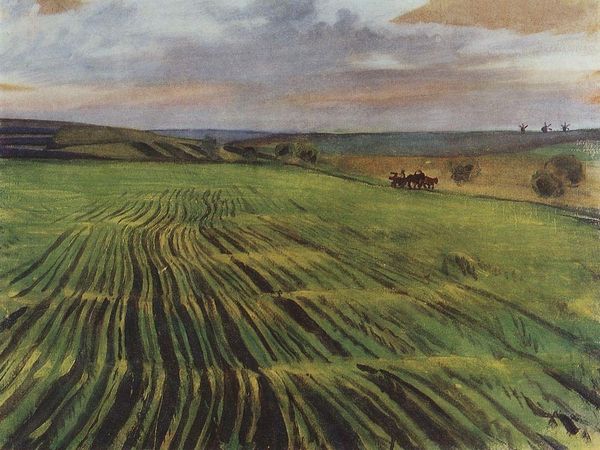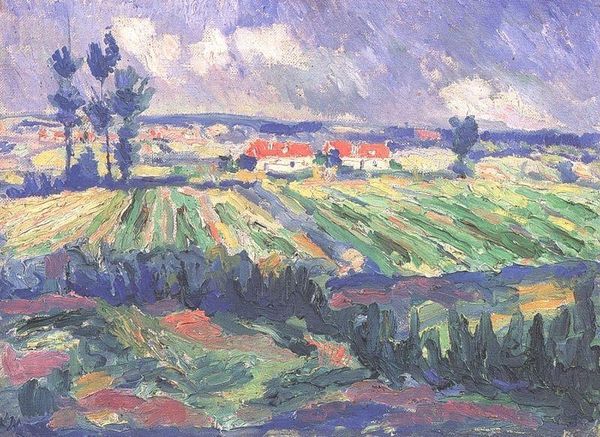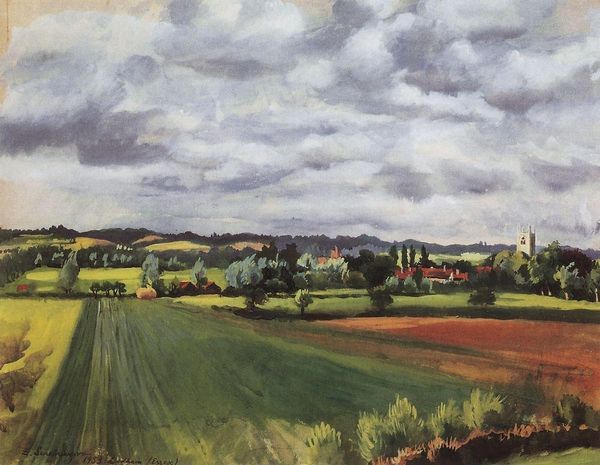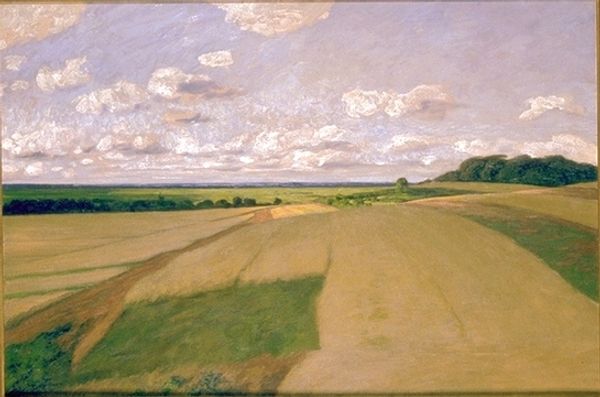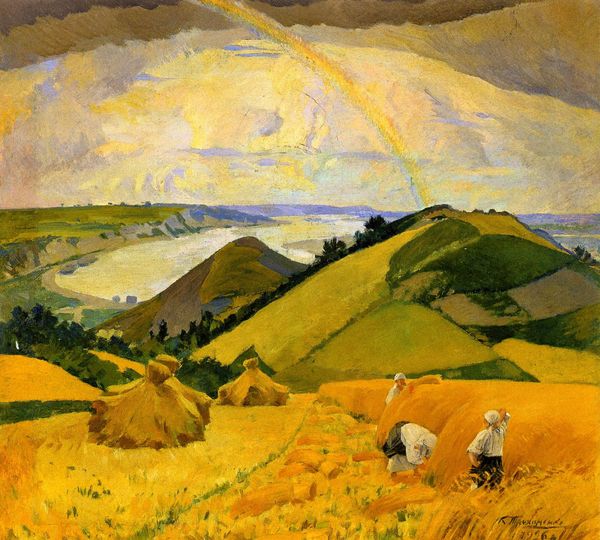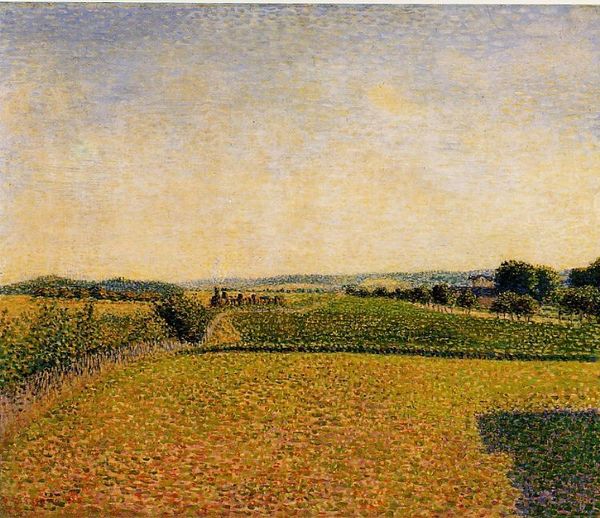
Copyright: Public domain US
Curator: Standing before us is Zinaida Serebriakova’s 1916 oil on canvas, "Landscape. Village Neskuchnoye.” The scene presents a broad, gently rolling countryside beneath a dramatic sky. Editor: My first thought is how serene this landscape feels. The soft palette and open composition suggest a peaceful existence, a retreat perhaps from the increasingly turbulent world outside. Curator: Indeed. Serebriakova, a woman artist working within a patriarchal society, often depicted scenes of rural life, offering a counterpoint to the dominant narratives of war and revolution during that era. Consider the materiality of the paint itself. The artist lays down layers of colour with palpable energy and care. It speaks to the labor and the means of creating this imagery. Editor: And it prompts us to consider what this ‘retreat’ really signifies. Neskuchnoye, meaning ‘not boring,’ seems almost ironic in light of the relative inactivity depicted here. This painting invites questions about women’s roles during this pre-revolutionary period in Russia, whether this apparent quietude represented liberation, constraint, or simply the circumscribed realities of daily existence. Curator: Look at the way Serebriakova handles light and atmosphere; that is pure plein-air technique at its best. The brushstrokes themselves become a kind of topography, echoing the cultivated fields. Editor: Yet I’m struck by the social dynamics not present. The artist is painting the backdrop against which village life unfolds, but not life itself. The missing laborers hint at their erasure within idealized landscapes, suggesting a disconnect between the art and the lived experiences of the workers who shaped this countryside. It becomes a political act to bring the viewer's attention back to those untold stories and to critically examine how these rural communities sustain and get sustained. Curator: It's the handling of light that draws me in—how it bathes the fields, highlights the architecture in the distance, and then disperses into those gorgeous cloud formations. This work resonates precisely because the process becomes almost visible, highlighting an honest capture of rural scenery. Editor: Thank you. For me, this has become a meditation on absence as much as presence, raising complex questions about landscape, labor, and visibility in pre-revolutionary Russia. Curator: Precisely. Serebriakova’s material engagement transforms a traditional landscape genre into something deeply considered, inviting reflection on not just what is visible, but what sustains it.
Comments
No comments
Be the first to comment and join the conversation on the ultimate creative platform.
